 "Tekamul" (tekamulburner)
"Tekamul" (tekamulburner)
03/14/2019 at 11:05 ē Filed to: None
 10
10
 7
7
 "Tekamul" (tekamulburner)
"Tekamul" (tekamulburner)
03/14/2019 at 11:05 ē Filed to: None |  10 10
|  7 7 |
This is the definitive 2018 Mitsubishi Outlander SEL S-AWC PHEV review
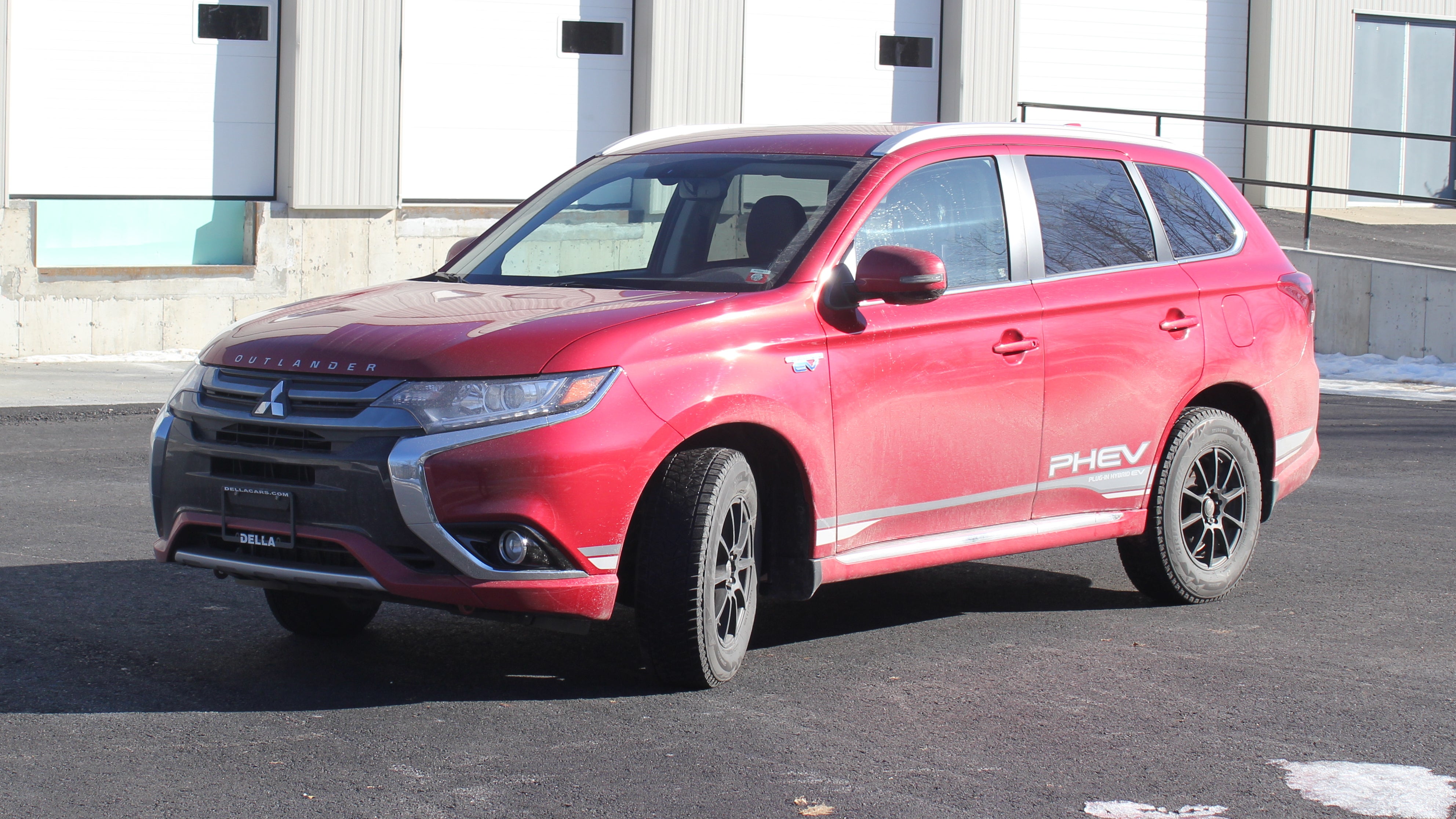
Disclosure : Mitsubishi wanted to sell me one of these so bad, they made me drive to a different state, slide around ice-encrusted roads on a test drive with a dead drive battery, and tacked a bunch of useless crap on to the car to inflate the price. So, this opinion should be mostly unbiased.
What Is It?
The 2018 Mitsubishi Outlander SEL S-AWC PHEV says it all right in the name, with all those abbreviations and acronyms. Itís a mid-sized SUV with Mitsuís version of AWD (actually, a different version then their normal version, more on that later) with plugin hybrid technology strapped on for good measure. The SEL means Ďselectí, which of course means youíve selected the base model. This is currently the cheapest AWD plugin hybrid available. In the same neighborhood are the Mini Countryman PHEV, the and the Subaru Crosstrek PHEV. The Mitsuís MSRP edges these guys out by 2 & 1 thousand respectively.
The Specs That Matter
This is a complicated little bugger, so expect a lot of numbers, not all of them very clear.
Gas motor : 2.0l, 117hp, 137tq
Electric Motors : Front - 80hp, 100tq. Rear - 80hp, 140tq
Combined system : 197hp, ??tq (Mitsu doesnít tell you, but I doubt itís much more than the 240 combined of the electric motors)
Transmission : 1-speed reduction gear
Generator Output : 70kW
Drive Battery : 12kWh, 300V. Consists of 80 series-connected Yuasa LEV50 batteries. Forced air heated & cooled pack.
MPGe : 74
MPG : 25 combined
Curb Weight : 4,178
Tow Rating : 1500 lbs
Gas tank : 11.3 gallons
Seating : 5
0-60 : 9.2s
A deeper dive into those specs, now that youíve picked your jaw up off the floor. Because, come on, 9.2 to 60!
First, the gas motor. Itís an unloved little bugger, 2 liters, but only 117 hp and 137 ft-lbs. Immediately, these are not good numbers. But the reasoning is that this sucker isnít really responsible for driving the wheels, at least not alone. The Outlander PHEV is setup like the Chevy Volt. Itís intended to maximize electric propulsion, first in EV-only mode, then series Hybrid mode. However, if youíve sufficiently drained the batteries, and are at a highway cruising speed, it will employ the 1-sp direct drive, and drive the front wheels from the gas motor directly, while also trying to charge the batteries. Itís a complicated system, but the Mitsu is right upfront with what itís doing. There are not one but two display screens showing you whatís happening with little animations and color coding. Itís interesting to not that transmission isnít much of a transmission, itís more like a super fancy differential. This means that associating engine sound to wheel speed is no longer a thing. Itís making its own decisions as to how much gas to burn.
Also, Iím sure your eyes went right to that MPG rating (nobody knows what the hell the MPGe rating means, so who cares, right?) I do not know how that number is measured. It looks to be the combined EPA cycle with completely dead batteries, but from my 8-tank experience thus far, itís not accurate. I donít know if itís relevant or not.
Lastly, that gas tank capacity. 11.3 gallons is not a lot, and the total range reflects it. Topped up and charged up, you going just over 300 miles before something needs a replenish. That is roughly in line with my other car, an FR-S, not known for its highway cruising acumen.
Looks
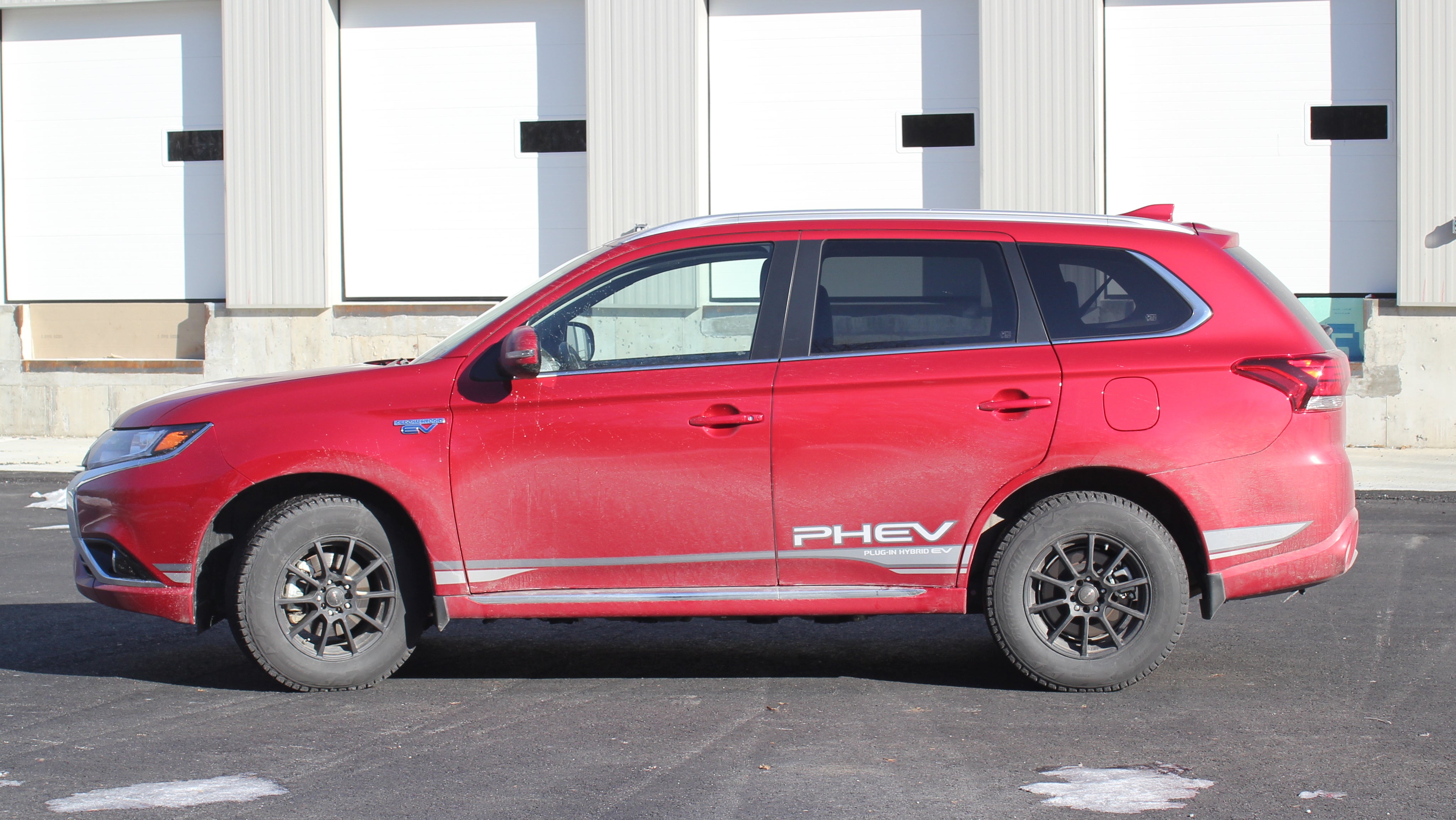
The Outlander PHEV is available in a handful of colors, most as dull as expected from a modern SUV. Thereís white, and black, and two(!) different greys. Wow. HOWEVER! Thereís also a brown, and a red. I was initially all in on brown, as self respecting pseudo-wagon hunting auto snob should be. But, when I looked at the interiors, I saw brown was actually the wrong choice. How could this be? Well, the only interior options for the PHEV are black leather and brown leather. Well perfect, you say, brown on brown and maybe a couple bonus brown leather patches on my blazer elbows for good measure. Well, thereís a catch. That brown leather interior comes with red stitching. Why? Simple : Mitsu doesnít want you ordering the brown exterior. Itís a conspiracy! Well, it worked. No brown on brown for me, instead, pairing the red exterior with brown interior including red stitching looks smashing. Specifically, the combo is Rally Red Metallic over Dark Brown.
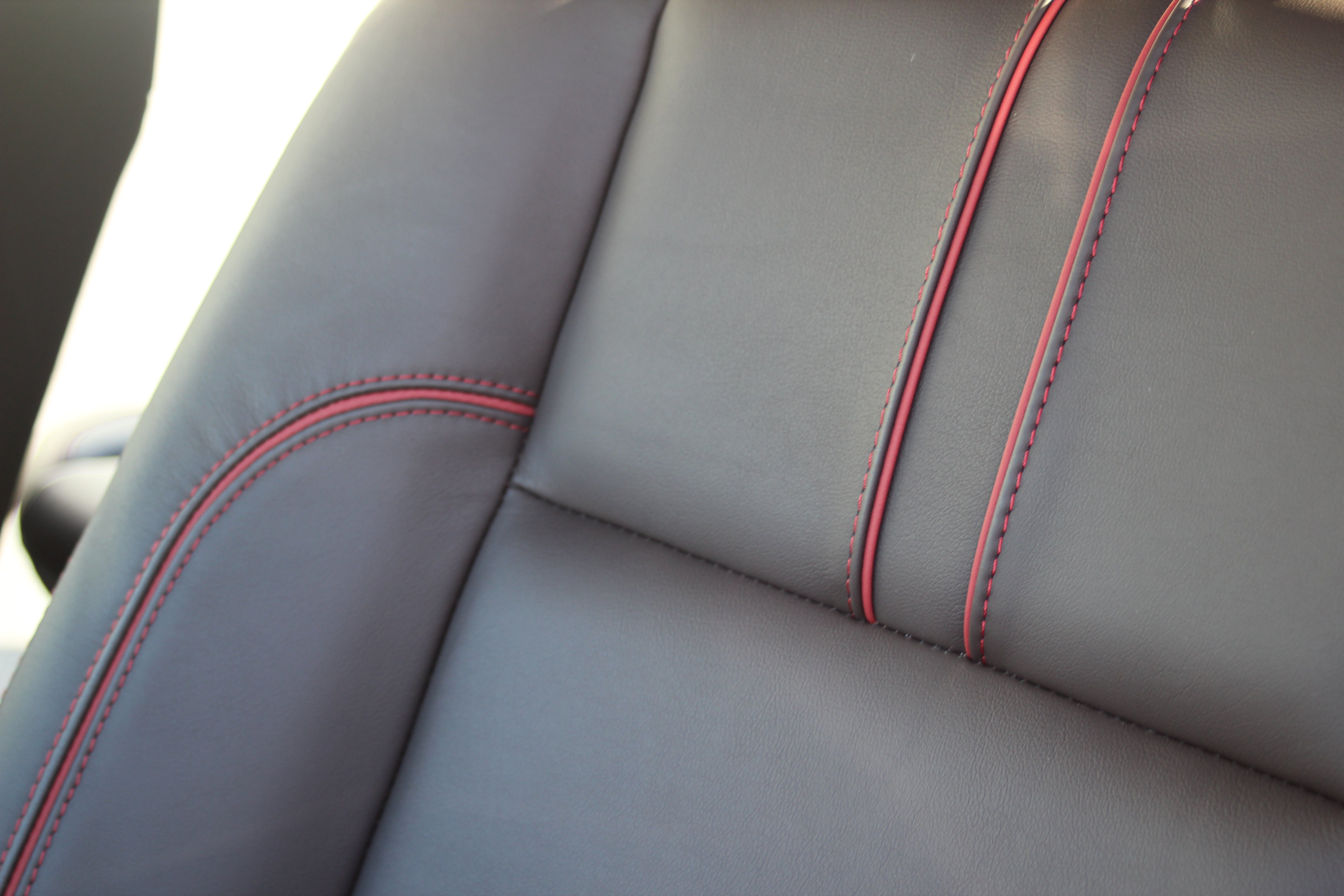
Daily Driving
Daily driving is exactly what this thing is for. In my case, this thing will be run every day, mostly at city speeds for 10-20 miles, with a semi-monthly trip of anywhere from 140 to 500 miles thrown on top. So it needs to be an everyday car. So far, this is up to the challenge. Itís comfortable, with decent leather on all the touch points, and the expected cost-cutting hard plastic on all the parts only your eyes touch. The biggest plus for the Mitsu versus the other options is the 2nd row space. Itís noticeably larger, especially fore and aft. There is a lot of legroom, which is a big deal when loading up with three kids. The second row even has some limited reclining action. The dash is a combination of old and new. Itís dominated by a 7.1" touch screen, but thatís supported by actual physical buttons for things like heated seats, dual zone HVAC controls, and a volume knob! Iím no fan of touch interfaces, and this one is as annoying as I expected, but once youíve set everything up, you can mostly ignore it. Steering wheel controls and voice activation can get you around most of it. The most important piece of the interface is that it works with Android Auto and Apple Carplay. Itís not the easiest to setup, but once working, the connection is easy, and gets you an interface youíre familiar with. No need for (and no option for) navigation. Google Maps is right there for you.
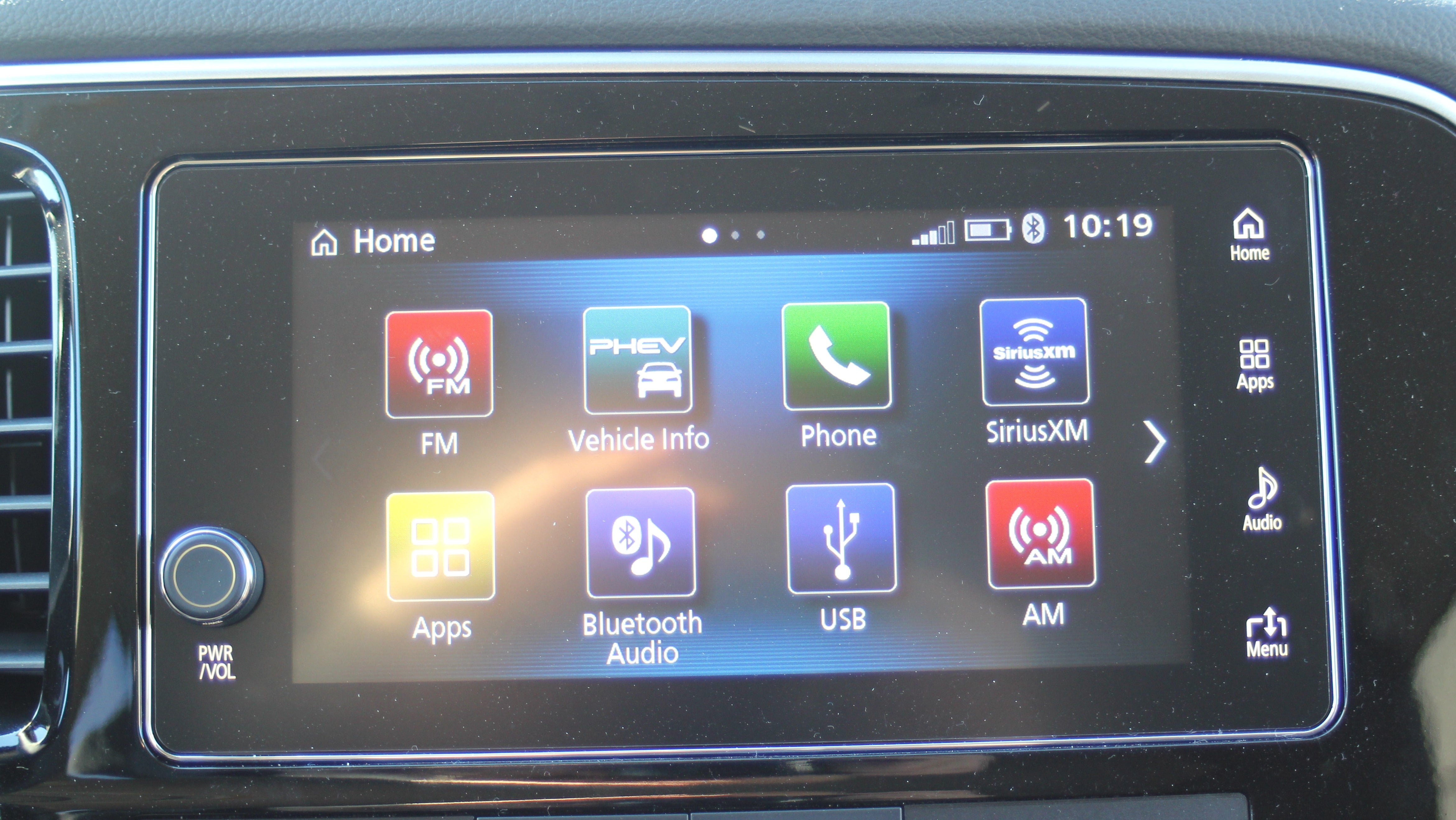
Out back the hatch space is ample. The battery pack is tucked under the front and rear seating rows outside the cabin, so there is little penalty on cargo space. The one big sacrifice is no third row option, as that would displace the already meager gas tank, and interfere with the placement of the rear electrical components. The rear seats flip their lower cushions forward, and fold the backs flat to match the hatch area, and provide a pretty large floor. You can even put the front seats all the way forward and recline to make a massive, mostly flat space for....sleeping I guess? Like a lot of modern cars, there is no spare. I hope you like fix-a-flat.
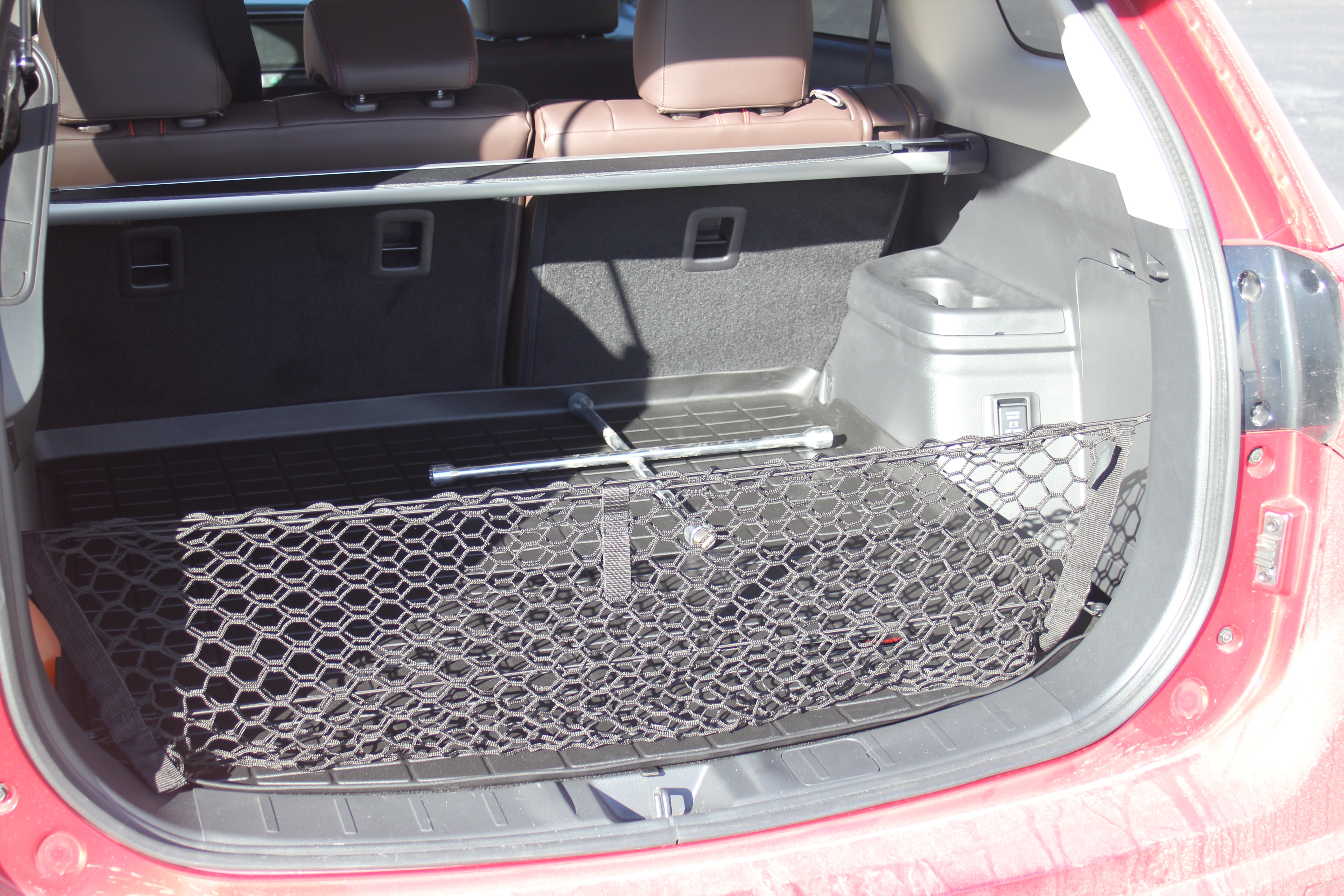
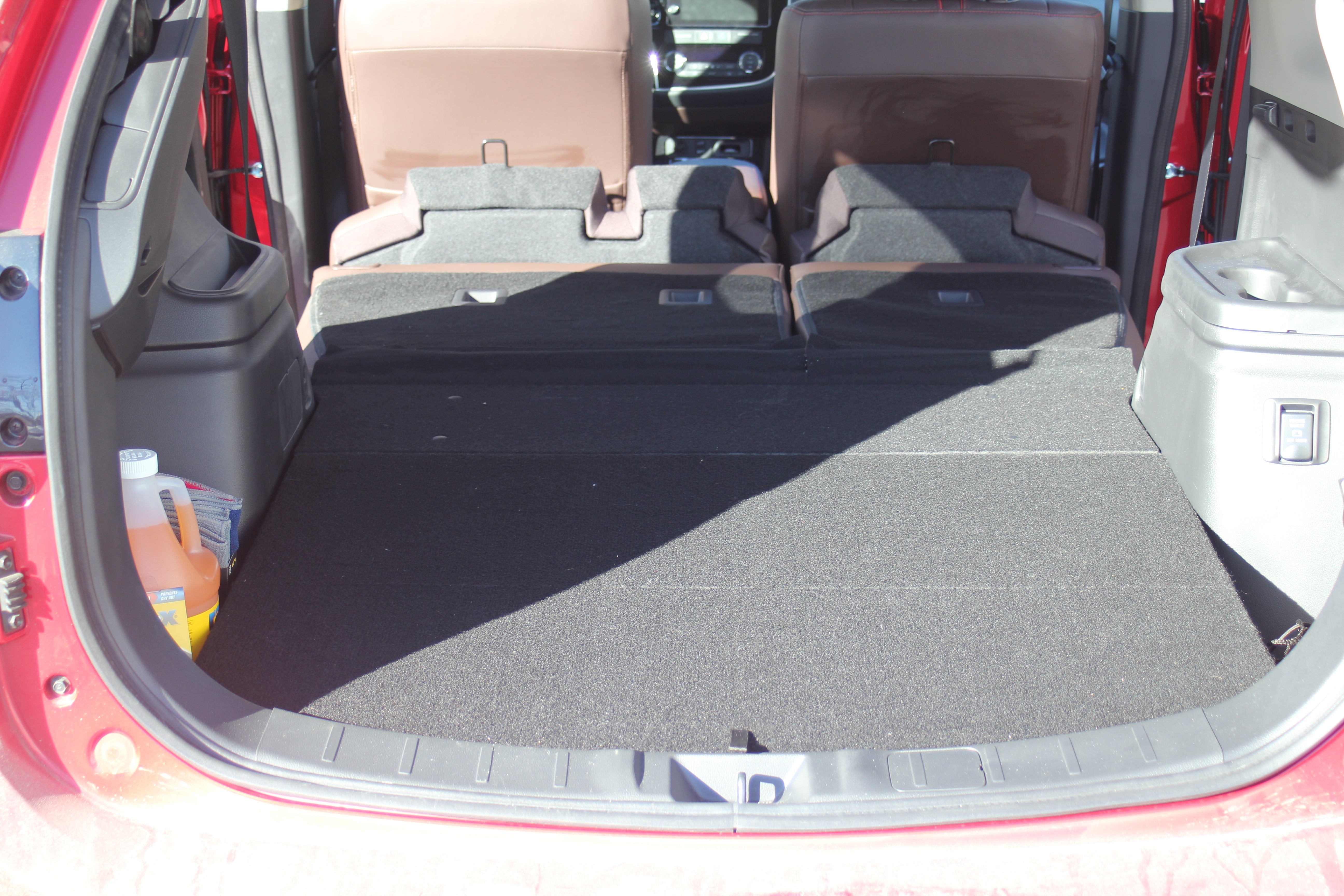
The driving experience at a relaxed pace is pretty nice. Itís surprisingly quiet when untaxed. Quieter than even the 2014 A4 we ditched in favor of the Outlander. It sits quite high, and does a good job of isolating you from the road. Stock wheels and tires are 225/55R18, but as itís February, these were quickly swapped out for Winter 215/70R16s which probably make the ride even softer. In full EV mode at city speeds, itís almost eerie. Once the batteries are depleted, the motor kicks in and thrums along pretty quietly until more is demanded. Once you ak for more, it responds, but sounds like trash. Thereís no reason to mince words. When thrashed, the 2 litre sounds harsh and unhappy. Also, because of the serial hybrid/parallel hybrid mix, the engine doesnít always reflect the wheel speed changes which draws your attention. Itís just meant to be dynamic.
I took a long drive to Boston and back (~500 miles round trip) and it did quite well. The Outlander has drive select modes which let you dictate normal operation (let the computer decide what to do), as well as a battery charge mode and and battery save mode. The thinking is, you know what your route will be better than the ECU. So, if youíre highway cruising with a city drive ahead, itís better to use battery for that city drive. You can conserve the charge when you have it, or build charge when you donít. I used both modes along the way, and they performed as advertised, and allowed me to operate through Boston on full electric. Overall consumption for the trip came out to ~ 32mpg . Pretty good for a sizable wagon on stilts. Around town where much of the driving is electric, the last tank was 68.5mpg . Thatís what Iím expecting for most of its life.
The last thing Iíll mention here is that it also has a 4WD lock mode, which sets it in serial hybrid mode and engages both electric motors. In normal operation, it drives the front wheels unless the S_AWC traction system requests AWD. In the 4WD mode, it is extremely sure-footed. Being in Vermont, Iíve had plenty of chances to drive in slick stuff, and it never seems to slip. The S-AWC apparently responds very quickly with a direct electrical control, versus throttle-by-wire control for ICE systems.
Enthusiast Driving
As mentioned, this is not that car. With charged batteries, the initial acceleration is strong, but that thrust trails off before 60mph is reached. It performs very much like the 4 cylinder Outlander in the 0-60 category, but it gets there differently. Iíd like to measure the 0-40, but honestly it would be for an argument not worth having. This is not a fast vehicle. Also, the ride is soft, and the S-AWC system is quick to limit the fun, so no angular flogging either. The stability can be turned off with a button push, but I donít know yet how Ďoffí is off. Iíd be interested to see how offroad it could go, as low speed control with the electric motors is great, and it has a drive lock mode that defeats the Ďcrawlí that is meant to behave like an auto with a torque converter. But the ground clearance is reduced by the batteries from 8.5Ē in the standard Outlander to 7.3Ē in the PHEV. Maybe in the Spring Iíll risk getting stuck, but I donít want to go bashing things with those pricey batteries.
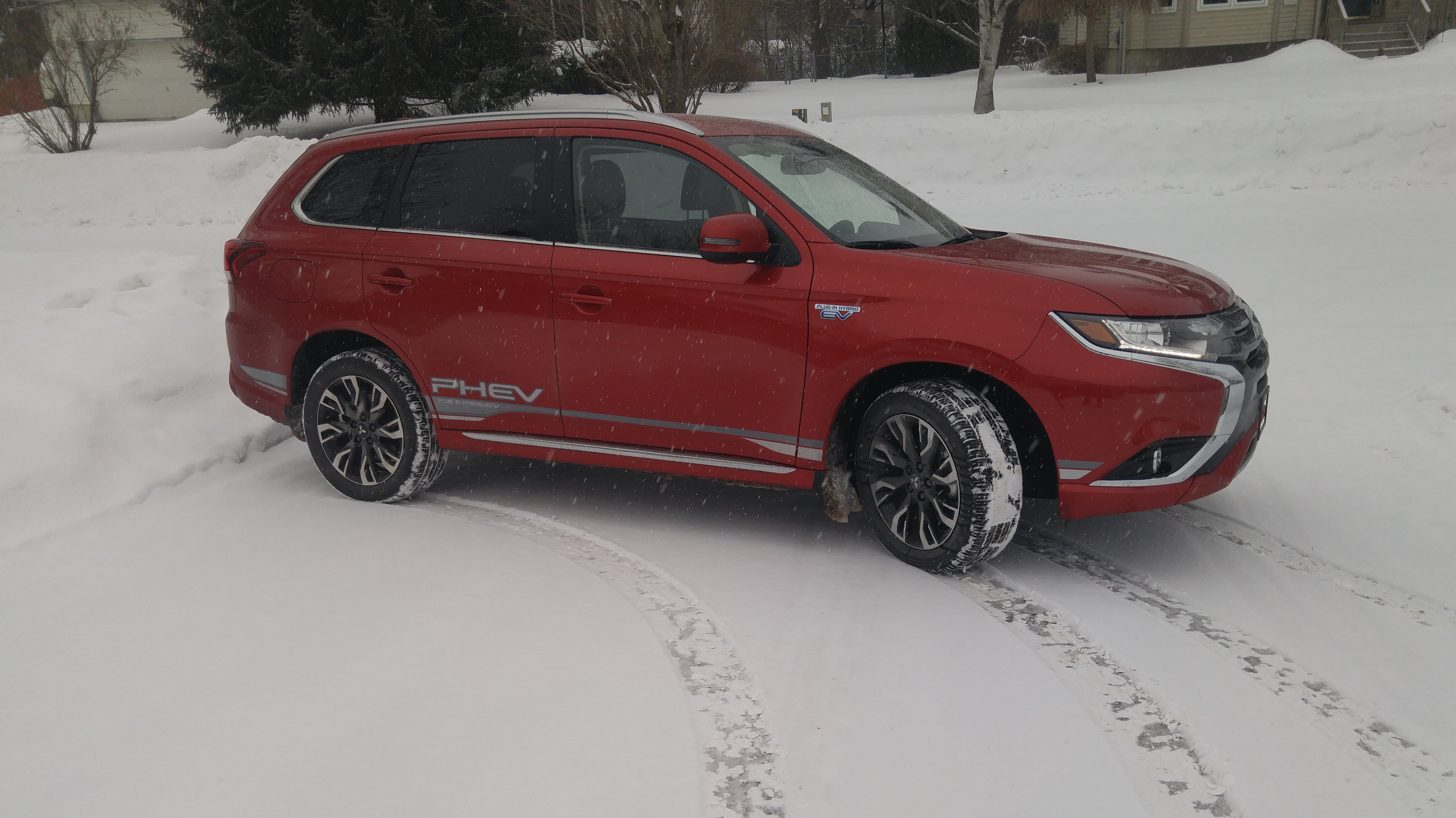
Electric Wizardry
The electric range is rated for 22 miles. So far it has come up short, more like 15 or 17, but itís February in Vermont. Batteries donít love the cold, and the HVAC has a definite impact. It has been sufficient for almost all of the around town driving on a daily basis thus far.
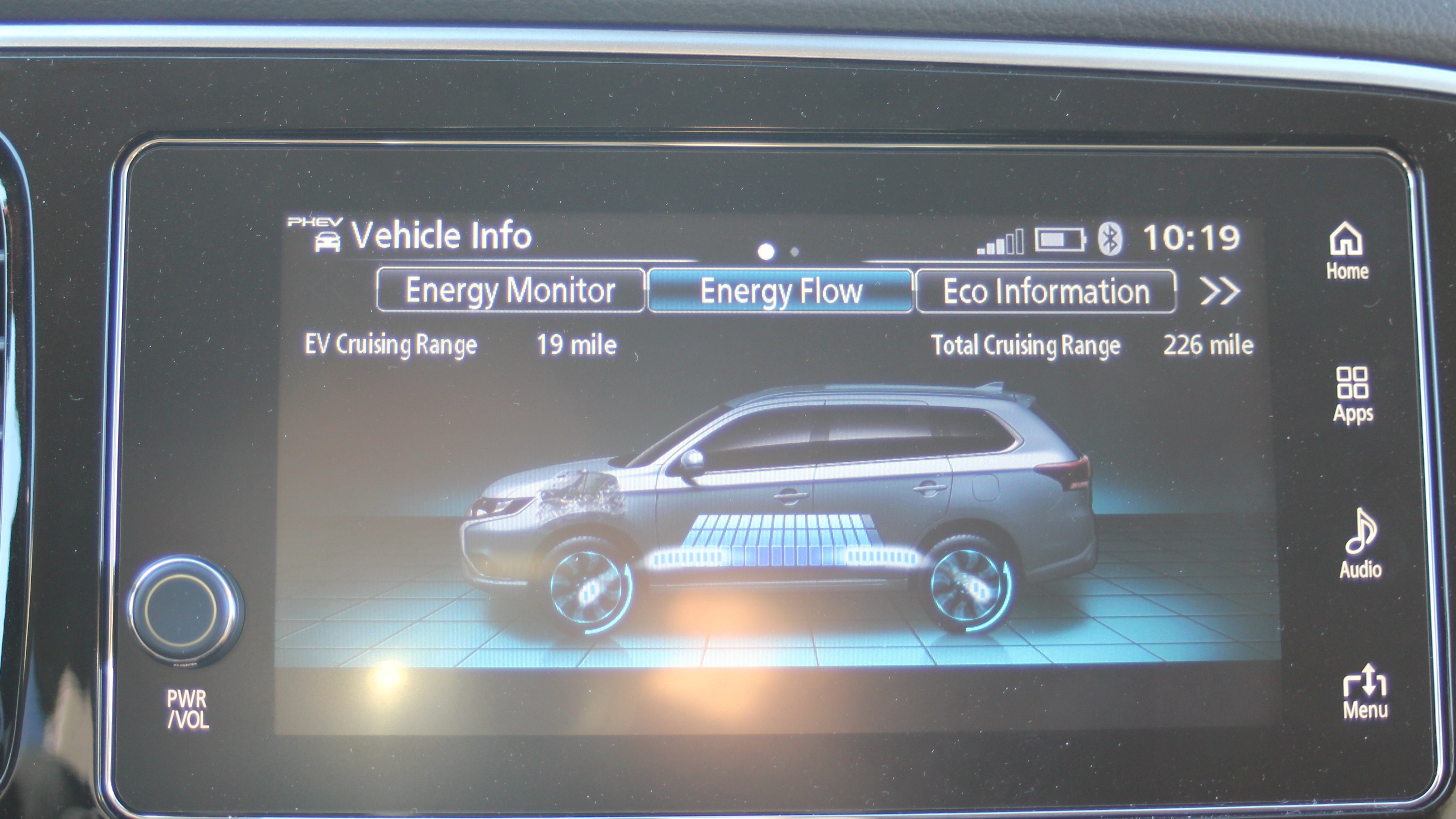
The vehicle interface offers up an energy flow display, that shows how the drivetrain is operating. This means showing power flowing between the battery and wheels (under drive or regen), and the power flowing from the engine to the batteries, or wheels, or both. Whenever power is flowing from the engine to wheels, it is colored orange, because apparently that means Iím being a bad environmentalist.
While operating, it feels quite seamless, I have yet to experience any jerkiness, or odd transitions from regen braking to actual pad-and-rotor braking. Again, when the control system decides it needs to dip deeply into the gas motor, the sound is not pleasant. More incentive to save the planet or whatever.
The AWD system uses the paired motors fore and aft. Iíve only done limited slippery surface duty thus far, but it has been very planted throughout. You can force the AWD system on to avoid the gas engine_FWD mode, but thatís only applicable at near highway speeds anyways, so itís mostly to feel better. At low speeds itís EV or serial hybrid, and those modes use both motors.
The car has an app with it, which lets you schedule both charge times (if youíre targeting off-peak rates) and HVAC warm up or cool down while plugged in. You can also just start a 10/20/30 minute timer for the HVAC if you know youíre out the door soon. This uses an electric AC system, or a ceramic heater system to cool or heat s set through the 2-zone climate control. It works when youíre not plugged in, too, but thatís a waste of battery in my opinion (this would serve as Teslaís Dog Mode that garnered some attention recently). Iíve added a 240V charger to the garage, so it can go from empty to full in about 3.5 hours. It also has the option for DC quick charging via CHAdeMO port, but I doubt Iíll ever use it.
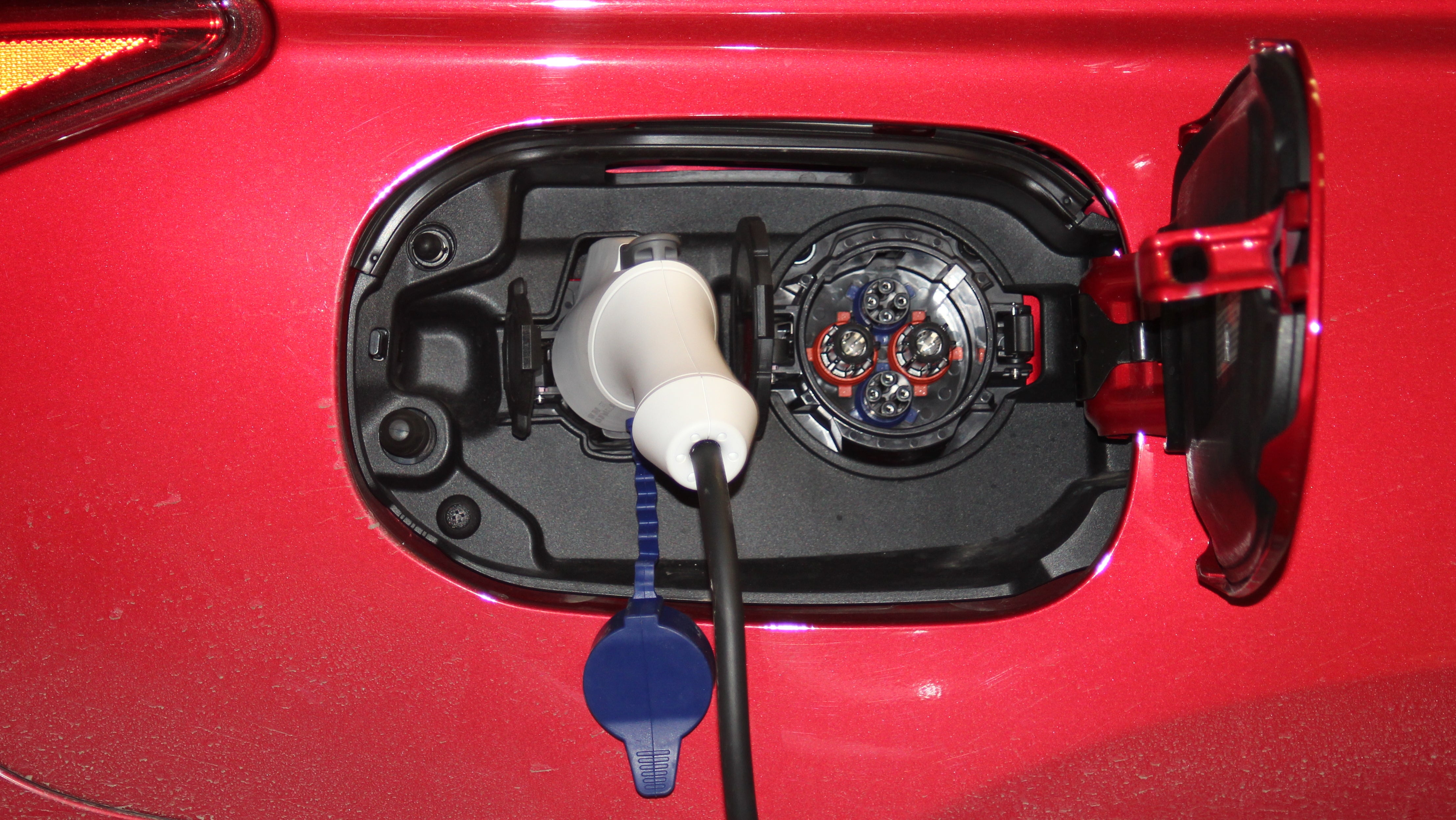
Value
The MSRP puts this right around what youíd pay (before extras) for a Mini Countryman PHEV, or the yet-unreleased Subaru Crosstrek PHEV. But, this is a Mitsu, and nobody buys these in the US. In Europe, the Outlander PHEV actually enjoys relative success, having sold over 100,000 units since the release in 2014. Stateside, this thing sat for about a year with only 8 test drive miles on it, and was delivered from a remote dealer to the dealer I used with a dead 12V battery that had to be quick swapped while I waited.
All that means that while the sticker showed $36,780 after destination, I paid $30,000 flat before taxes and $75 doc fee. That, plus the $5,836 federal tax credit means that the effective out of pocket cost will be $24,164 . For a leather lined PHEV SUV. Feels like a bargain.
Highs
32 MPG on a 500 mile highway stint
68.5 MPG on the last tank, assisted by lots of EV-only errands
Very planted on slippery roads
Q
uiet around town
Big on the inside
Cheap after discount & tax credit
Lows
No digital speedo display
Sounds like an angsty teen if you hammer the gas
Slow acceleration at highway speeds
Big on the outside
Limited passenger comforts (no rear seat heaters, 1 auto up/down window)
The intention is to keep this thing for a very long time. It should be relatively reliable, and it has a long warranty (10/100k). Thatís a long time to spend with a relatively boring car, but it will never be an Ďonlyí car, so that helps.
 Arrivederci
> Tekamul
Arrivederci
> Tekamul
03/14/2019 at 11:57 |
|
Cool write-up!† Didnít even know these were a thing.††
 Tekamul
> Arrivederci
Tekamul
> Arrivederci
03/14/2019 at 12:35 |
|
Yeah, I have yet to see another one in the wild, so I expect most donít know they exist.
 Under_Score
> Tekamul
Under_Score
> Tekamul
03/14/2019 at 12:59 |
|
Neat! Do you have all of the neat safety tech these can† come with? If these were offered in the blue, Iíd be more interested.
 Tekamul
> Under_Score
Tekamul
> Under_Score
03/14/2019 at 13:11 |
|
It does not have the safety tech. We specifically decided not to pay the $57 00 package option for the safety tech + moon roof. It just wasnít something my wife or I were interested in. It has the blind spot warning standard, but not the forward collision mitigation or lane departure warning.
 ZHP Sparky, the 5th
> Tekamul
ZHP Sparky, the 5th
> Tekamul
03/14/2019 at 13:21 |
|
Very cool, thank you for this write-up. I actually think these things look pretty sharp and are one of the more interesting PHEV options (maybe obscurity helps there too a bit?). You did get a great deal on it Ė especially if itís a vehicle you plan on keeping for a while, with that warranty.
I am coming to an end on my Spark EV lease and am going to miss having an EV for commuting duty. Part of me would love another BEV/PHEV replacement but we donít really NEED a 3 rd car and would rather not pay that much out of pocket for another car. If I could find another dirt cheap lease on an EV I would (paid $0 down, a bit over $100 a month for the Spark) but deals like that seem to have dried up with not too many small, cheap (and unpopular?) EVs on the market at this point.
Curious to see how resale on these Outlanders turn out to be. Hope it treats you well. Would expect EV only range to improve with warmer weather. My battery currently shows range of ~55 miles for me on a full charge, but in summer can get close to 100 (think its rated for 70 something). 15-17 probably isnít too bad given where youíre located on a car rated for 20.
 Tekamul
> ZHP Sparky, the 5th
Tekamul
> ZHP Sparky, the 5th
03/14/2019 at 13:41 |
|
Thanks.
Iím hoping the battery longevity holds out, and Iíve already seen a tear down of the pack. Itís very serviceable , with the pack using off-the-shelf Yuasa LEVs, so if one cell dies it can be replaced.
Iím sure the resale value will be bad because Mitsu , but I donít usually turn a car over quick (the A4 this replaced was an exception , because it was just a bad fit).
 Theodore
> Tekamul
Theodore
> Tekamul
11/19/2019 at 01:08 |
|
The charm of this vehicle (beyond the PHEV aspect) is that it is a small SUV that doesnít try to style itself as some transformer toy or pseudo space craft leaving a tiny interior with even tinier windows to peer out of. It seems to actually have some interior space. Bravo.
Not optimistic about longevity though as Mitsys had a rep for giving up piston rings at about 50k.